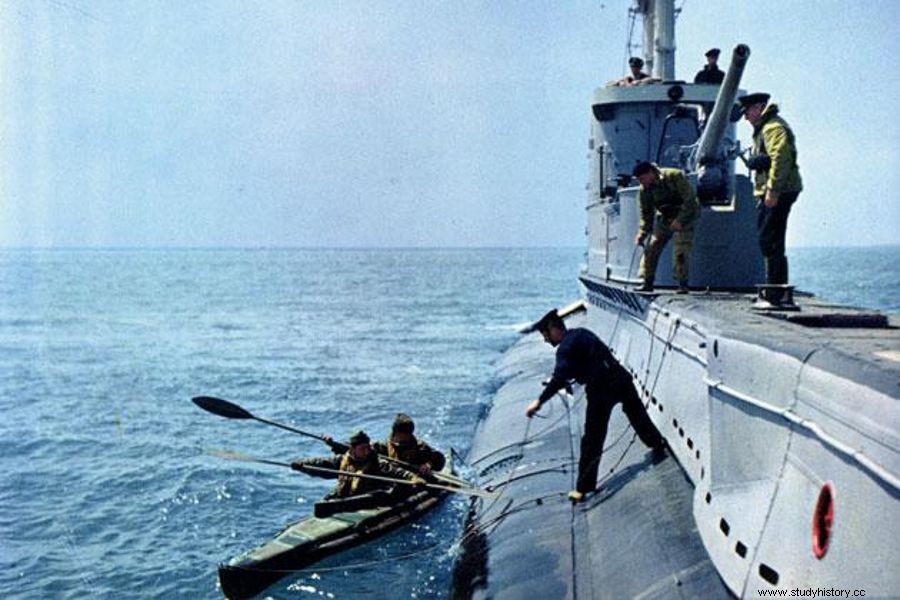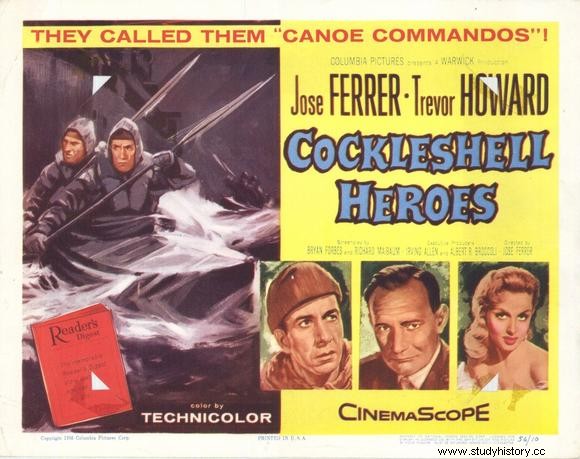The defeat of the allies in the Battle of France , and the subsequent armistice signed on June 22, 1940 in the wagon of revenge, left France divided in two:a German occupation zone in the north and west and an unoccupied zone, the free zone, in the south with the Vichy puppet government. Despite the Allied maritime blockade, the port of Bordeaux, in the occupied zone, continued to receive merchant ships with war supplies, fuel, food... The choice of Bordeaux as the German supply port was not by chance:it is located about 80 km inland , in the Bay of Biscay, in the Garonne River estuary and its mouth is mined of small islets.
Made known to Churchill , operations involving massive attacks were gradually ruled out and left in the hands of Admiral Louis Mountbatten , Head of Royal Marines Combined Operations , to devise a plan to end that problem. This one, he remembered that some time ago he had discarded, as preposterous, a proposal made by Commander Herbert « Blondie »Hasler to destroy large ships within the ports with small kayak-type boats. It was time to study that proposal... Operation Frankton was born. . The operation consisted of arriving in kayaks, prepared by Hasler himself to carry 2 people and 75 kg of equipment, to the port of Bordeaux and destroying the ships with sticky bombs before fleeing overland, through Spain, to Gibraltar. Commander Hasler was put in command and 34 volunteers were recruited to undergo rigorous training at the Portsmouth base:night and silent navigation techniques, handling of sticky bombs, real raids on British ports... After six months, and after a selection by elimination, the command was reduced to 10 members.

On December 7, 1942 the submarine HMS Tuna emerges from the waters and leaves the 10 men in 5 kayaks (Catfish, Coalfish, Crayfish, Cuttlefish and Conger ) about 20 km from the mouth of the Garonne… they should travel 100 km to the port of Bordeaux. For one reason or another, only Catfish, Crayfish and Cuttlefish managed to reach the mouth. Now they had to dodge the islets, the German batteries and the ships that guarded the entrance to the port... only Catfish and Crayfish crossed the line of defense. It was the first night and they still had to travel the 80 km along the river to the port. During the day they hid and at night they advanced along the river… on the night of December 11 they reached their destination. Hasler and Bill Sparks , who were occupying the Catfish, managed to place sticky bombs under the waterline of 4 boats - with a delay device that activated the bomb in 9 hours - and the crew of the Crayfish, Laver and Mills , in two others. They sank the kayaks and the two couples split up to follow the plan and, with the help of the resistance, cross into Spain.

The next morning the port woke up with the explosions of the ships. The mission had been a complete success… and what happened to the 10 members of the commando? Only Hasler and Sparks managed to cross into Spain. They followed the Barcelona-Madrid-Seville route to reach Gibraltar and, after almost 6 months, to London; another seven were captured and executed by the Germans and the last one drowned (James Conway, Robert Ewart, Albert Laver, Bill Mills, John Mackinnon, David Moffatt, George Sheard and Sam Wallace ).
In 1955 the film The Cockleshell Heroes was released. based on Operation Frankton. Hasler would live until 1987 and Bill Sparks until 2002.

